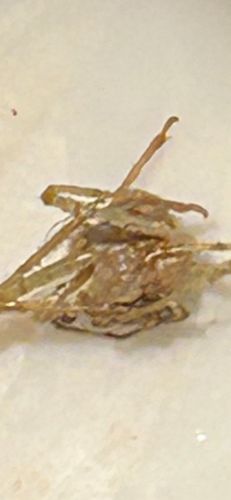Praying Mantis (likely a nymph or a camouflaged adult)
Scientific Name: Mantodea (Order)
Order & Family: Order: Mantodea, Family: Varies by species, but likely Mantidae or similar
Size: Nymphs can be quite small (a few millimeters to centimeters), while adults range from 1-16 cm depending on the species.

Natural Habitat
Found in various terrestrial habitats including gardens, meadows, forests, and grasslands, often on plants or shrubs where they can ambush prey.
Diet & Feeding
Strictly carnivorous, feeding on a wide variety of insects (flies, moths, crickets, grasshoppers) and sometimes even small vertebrates (lizards, frogs, small birds) if they are large enough.
Behavior Patterns
Known for their 'praying' posture, which is actually a stance for ambushing prey. They are masters of camouflage, blending in with their surroundings. They are solitary insects, and females are notorious for sometimes exhibiting sexual cannibalism, eating the male after or during mating.
Risks & Benefits
Benefits: Excellent biological pest control as they prey on many garden pests. Risks: None to humans directly, though large species can deliver a pinch if handled carelessly.
Identified on: 9/13/2025